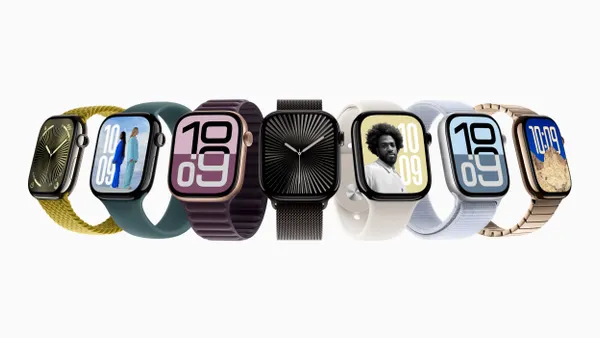A warning letter sent by the Food and Drug Administration to wearable company Whoop has sparked a debate on when wellness claims should be regulated as medical devices.
Whoop, a company selling a wearable wristband to track metrics such as sleep, heart rate and strain, received the warning letter on Monday for marketing a blood pressure insights feature without FDA authorization.
The feature provides daily systolic and diastolic blood pressure estimates by measuring heart rate variability during sleep. Whoop’s website states that the feature is intended to help users track blood pressure trends and have a deeper understanding of how blood pressure affects their wellness. The website also marketed the feature as an example of how Whoop is "delivering medical-grade health & performance insights,” according to the warning letter.
In a response posted Tuesday, one day after the letter was sent to the company, Whoop said it disagrees with the FDA’s assertion that the blood pressure feature should be reviewed as a medical device before being available in the U.S., claiming it is a wellness feature, not a medical device.
“This interpretation is also inconsistent with the 21st Century Cures Act, which clarifies that functions intended to promote a healthy lifestyle — and unrelated to the diagnosis, cure, mitigation, prevention, or treatment of a disease or condition — are excluded from the definition of a medical device,” a Whoop spokesperson wrote in an emailed statement.
In the warning letter, the FDA said it met with Whoop twice to discuss the feature and received a letter from the company in June explaining why it believes the blood pressure insights feature should not be regulated as a medical device.
The FDA said that blood pressure measurements are “inherently associated with the diagnosis of hypo- and hypertension,” and are therefore intended for use to diagnose, treat or prevent disease. The regulator also noted that providing blood pressure estimation is not a low-risk function.
The back-and-forth sparked a debate on LinkedIn among regulatory professionals about whether the blood pressure feature should be regulated as a medical device. Attorneys at Washington D.C.-based law firm Hyman, Phelps & McNamara wrote in a blog post that the warning letter goes against the FDA’s precedent for intended use, adding that the agency has created separate product codes in the past for “general wellness” and medical versions of pulse oximeters and heart rate monitors.
However, others presented concerns that blood pressure could be viewed as a clinical metric no matter how it is presented.
“Some believe that once you define a feature as ‘for wellness,’ it automatically becomes non-medical, no matter what it measures,” Yusuf Cem Kaplan, a physician and former medical advisor at Flo Health, wrote in a LinkedIn post. “But as a medical doctor, I can say that some features carry diagnostic weight no matter how gently you present them. Blood pressure is one of those.”
The debate is timely, given that Health and Human Services Secretary Robert F. Kennedy Jr. has said he wants to encourage all Americans to use wearables. In May, Kennedy met with executives from health tech startups, including Whoop, according to Stat News.
Other wearable device companies are taking a different approach. Earlier this month, the FDA cleared the first over-the-counter cuffless blood pressure monitor with a wrist-based device made by Aktiia.












